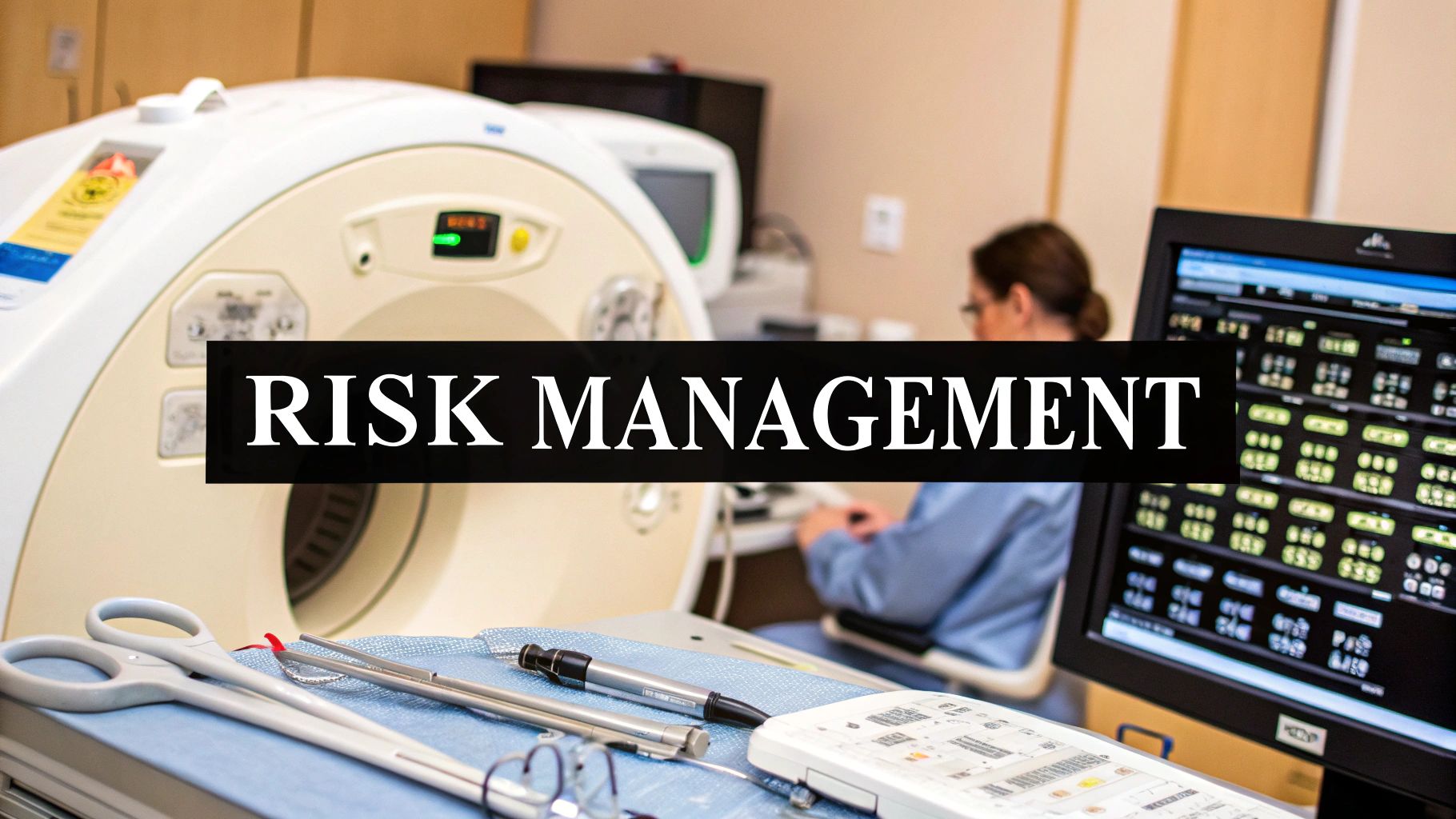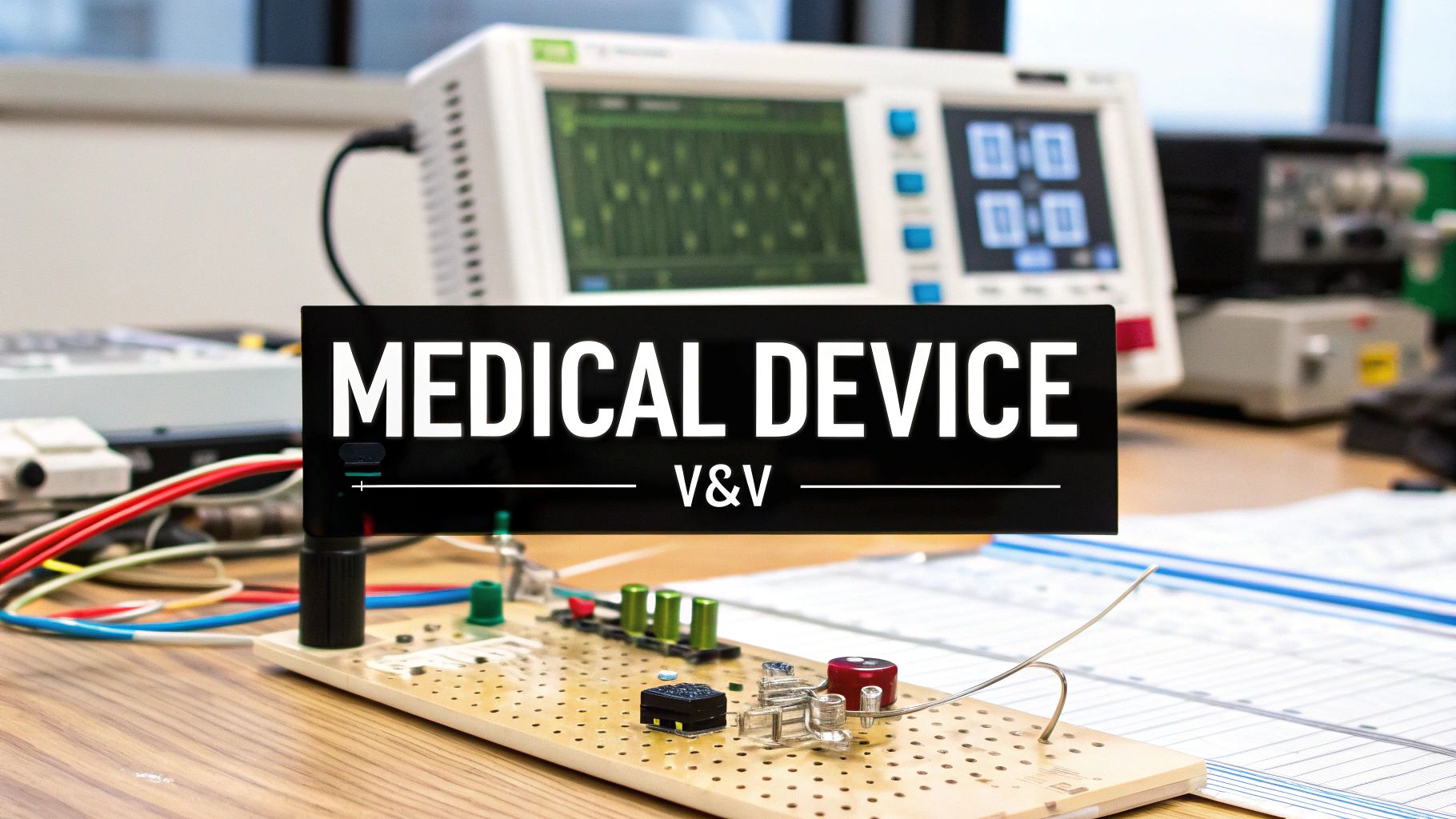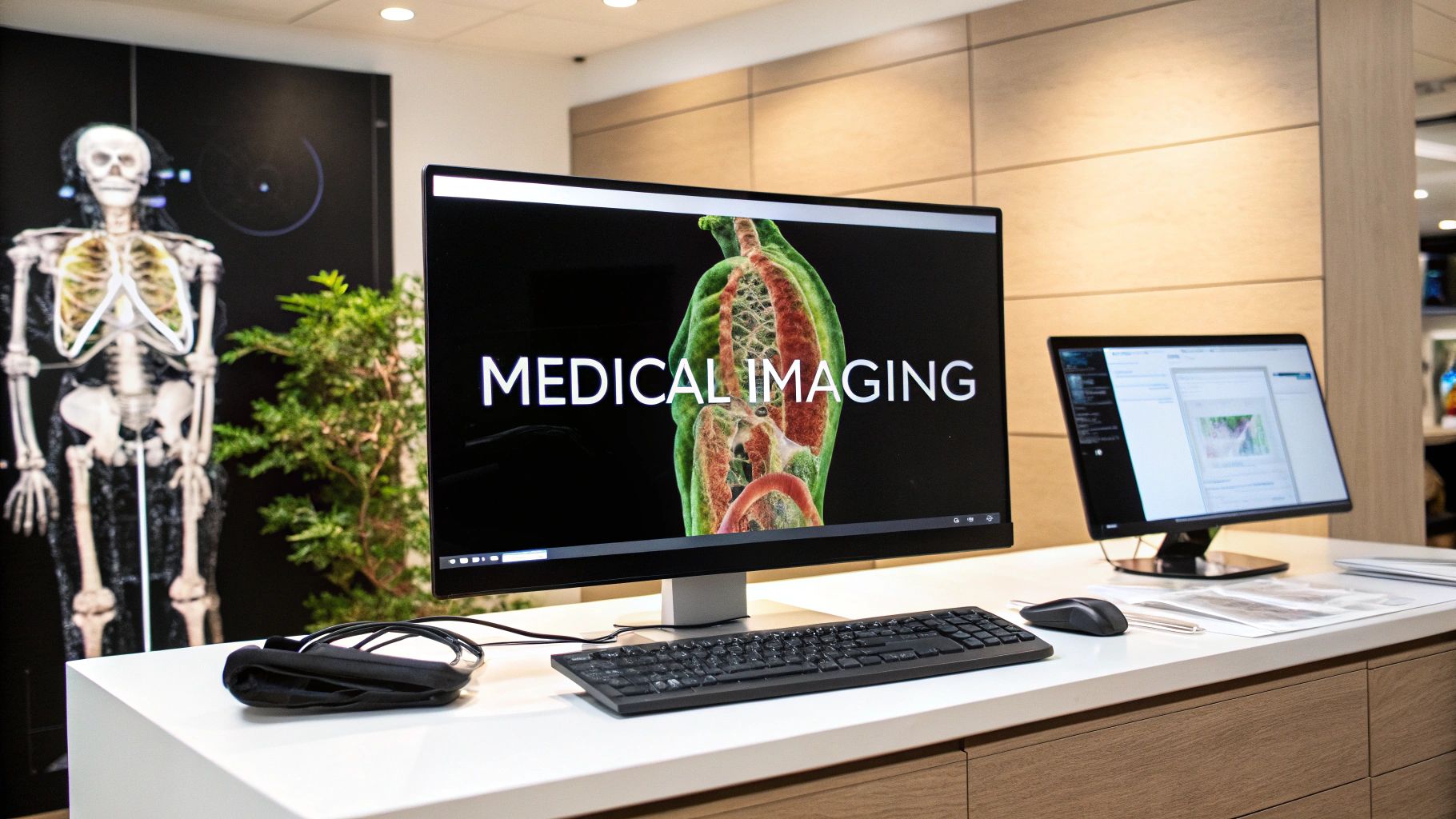The Evolution of DICOM Data: From Standard to Necessity

Medical imaging has dramatically changed over the past few decades. We've gone from film-based methods to entirely digital systems. Central to this shift is DICOM data, the now-universal standard for medical images. This evolution has impacted not only image acquisition and storage but also interpretation, sharing, and analysis, leading to better patient care. How did DICOM data become so essential to modern healthcare imaging?
The story begins in 1985 with the American College of Radiology (ACR) and the National Electrical Manufacturers Association (NEMA). They collaborated on ACR-NEMA 300, a standard aimed at creating a common digital image format for medical diagnostics. This was a major first step toward standardizing medical image exchange.
ACR-NEMA 300 gradually evolved, incorporating network protocols like TCP/IP for better image transmission and storage. This eventually led to the creation of DICOM in 1993. By the early 1990s, DICOM was being used in large medical networks like the US military's Picture Archiving and Communications System (PACS). You can learn more about DICOM here.
From Resistance to Reliance: The DICOM Adoption Story
Initially, many healthcare providers hesitated to adopt DICOM. The change required substantial investments in new systems and processes. Some organizations felt the standard was too complicated or unnecessary.
However, DICOM's advantages soon became clear. The ability to share images quickly and reliably—between departments, hospitals, and even internationally—transformed patient care. This spurred wider adoption.
DICOM: The Foundation for Modern Healthcare Imaging
The shift to digital imaging, driven by DICOM, brought significant progress to healthcare. PACS, built on the DICOM standard, eliminated the need for physical film storage, allowing for faster image retrieval. This not only boosted efficiency but also reduced the risk of lost films. The standardized format also enabled the development of teleradiology, allowing specialists to interpret images remotely.
DICOM's Impact on Clinical Excellence and Operational Efficiency
DICOM is no longer just a file format; it's the foundation of modern medical imaging. It allows seamless integration with advanced technologies like artificial intelligence (AI) and machine learning, further improving diagnostics and streamlining workflows.
Institutions are using DICOM data to enhance clinical performance and operational efficiency. They're implementing strong data governance policies, guaranteeing data quality and security, and finding new ways to analyze DICOM metadata to gain insights for better patient care and operational improvements. This ongoing evolution highlights DICOM's crucial role in the future of healthcare.
Breaking Down DICOM Data: The Architecture of Medical Imaging
DICOM data isn't simply a collection of image pixels. It's a highly structured system packed with essential information. This architecture is fundamental for organizing, accessing, and interpreting medical images efficiently. Understanding this structure is key to harnessing the power of DICOM.
The Patient-Study-Series-Image Hierarchy
DICOM data follows a hierarchical structure, similar to a well-organized filing system. This hierarchy consists of four levels: Patient, Study, Series, and Image.
-
Patient: This is the highest level. All DICOM data related to a specific individual is grouped under their unique patient identifier.
-
Study: A study represents a particular examination performed on a patient, such as a knee MRI or a chest CT scan.
-
Series: A single study can contain multiple series. A series is a group of images acquired using the same modality and parameters within a single examination. For example, a CT scan might have separate series for different body regions or with and without contrast.
-
Image: At the base level is the individual image. This could be a single slice from a CT scan, an X-ray image, or a photograph from a dermatological exam.
This hierarchical organization allows for efficient retrieval and management, particularly important in large healthcare systems handling significant volumes of DICOM data daily.
Metadata: The Unsung Hero of DICOM
DICOM files contain more than just the images themselves. They also include metadata, which is descriptive information that provides crucial context. Metadata includes patient demographics (name, birth date), study details (date, time, modality), and technical parameters (acquisition settings, equipment information). Metadata informs critical clinical decisions by giving clinicians a comprehensive understanding of the image's background.
For example, knowing the radiation dose from a CT scan is vital for patient safety. The specific contrast agent used in an MRI can significantly impact image interpretation. Therefore, proper metadata management is essential for maintaining data quality and integrity.
DICOM Data Components and Clinical Value
The combination of structured data and rich metadata makes DICOM invaluable in healthcare. To illustrate this, let's examine the clinical significance of key DICOM components. The following table provides a breakdown of essential elements and their impact on patient care and operational efficiency.
To understand the practical implications of DICOM’s structure, let’s take a closer look at the individual components that drive its clinical value.
Essential DICOM Data Components That Drive Clinical Value
| Component | Description | Clinical Significance |
|---|---|---|
| Patient ID | Unique identifier for each patient | Ensures accurate record-keeping and prevents patient data mix-ups |
| Study Date/Time | Date and time the study was performed | Enables tracking of disease progression and treatment response over time |
| Modality | The imaging technique used (e.g., CT, MRI, Ultrasound) | Guides image interpretation based on the modality’s strengths and limitations |
| Body Part Examined | The specific anatomical area imaged | Focuses the clinician's attention on the relevant region |
| Acquisition Parameters | Technical details about image acquisition (e.g., slice thickness) | Influences image quality and diagnostic accuracy |
| Contrast Agent | Details about any contrast media used | Crucial for accurate interpretation, especially in enhanced images |
| Radiologist Report | The radiologist's written interpretation | Provides diagnostic conclusions and recommendations for patient management |
This table highlights how these components contribute to better patient care and streamlined workflows. From ensuring accurate patient identification to providing context for image interpretation, these elements are crucial for maximizing the value of medical imaging data.
The effective organization of DICOM data, encompassing both image data and metadata, is fundamental to modern healthcare. This structured approach enhances patient care, facilitates collaboration among healthcare providers, and fuels advancements in medical research. As medical imaging data volumes continue to grow, adhering to the principles of DICOM architecture will be increasingly critical for improving patient outcomes.
Beyond Radiology: How DICOM Data Transforms Specialties
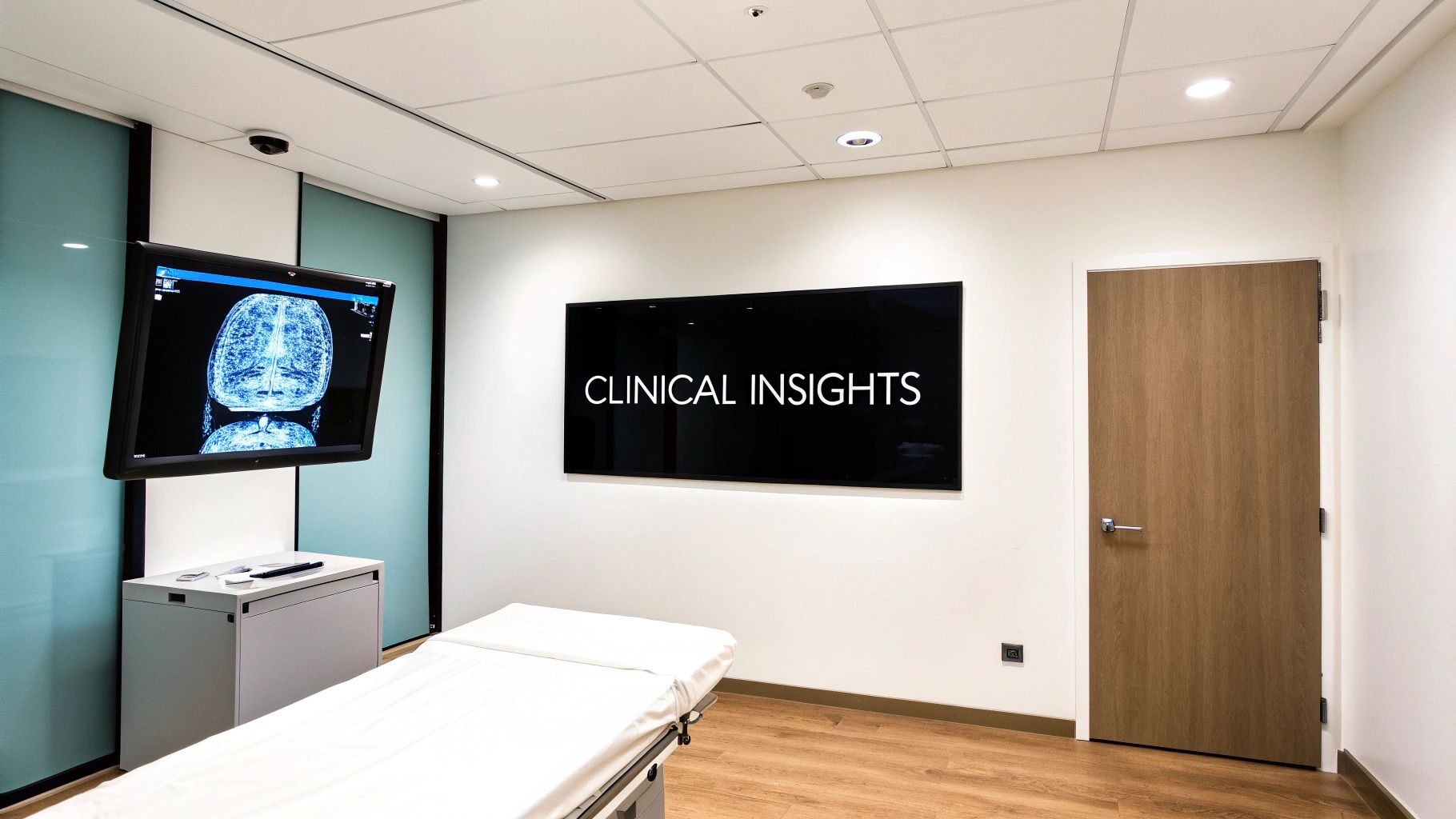
While initially associated with radiology, DICOM data now impacts diverse medical fields. This wider adoption has improved patient care quality and efficiency through seamless data sharing and increased collaboration. It highlights DICOM's flexibility in meeting varied medical needs.
Cardiology: Visualizing the Heart's Rhythm
DICOM plays a crucial role in cardiology, particularly for procedures like angiograms and echocardiograms. These tests produce images that must be stored, retrieved, and analyzed quickly. DICOM facilitates this, enabling cardiologists to access images promptly and make informed decisions.
The standardized format simplifies sharing cardiac images among specialists for consultations and second opinions. This improved information access ultimately leads to more favorable patient outcomes.
Ophthalmology: A Clearer View of Eye Health
Ophthalmology, a field heavily reliant on imaging, also benefits from DICOM. Images from optical coherence tomography (OCT) and fundus photography are stored and managed using DICOM. This creates a comprehensive record of a patient’s eye health.
This structured data management simplifies tracking disease progression and evaluating treatment effectiveness. DICOM allows ophthalmologists to compare images over time, leading to more precise diagnoses and tailored treatment plans.
Breaking Down Silos: Cross-Specialty Collaboration
A key advantage of DICOM's expansion is improved collaboration among specialties. The standardized format ensures that images from various modalities and departments are accessible to any clinician with a DICOM viewer. This streamlined information access significantly enhances care coordination.
For example, a cardiologist can readily review a patient's chest X-ray from radiology, gaining a more complete understanding of the patient’s condition. This interoperability is particularly valuable in complex cases requiring multi-specialty input. DICOM breaks down departmental barriers, promoting a more integrated approach to patient care. Continued adoption of DICOM across specialties will further enhance this interconnectivity, benefiting both patients and clinicians.
The Evolution of DICOM: Adapting to Healthcare Needs
DICOM’s growth demonstrates its ability to adapt to evolving healthcare needs. Since its development in the 1980s, DICOM has continually broadened its scope. In 1995, it incorporated protocols for ultrasound, X-ray angiography, and nuclear medicine. By 1999, it encompassed endoscopy and dermatology.
The 2000 addition of Structured Reporting (SR) further enriched data capabilities. These advancements highlight DICOM’s adaptability and scalability, significantly improving data-driven decision-making in healthcare. Learn more about the history of DICOM here.
Prioritizing DICOM Integration for Improved Outcomes
Leading healthcare institutions are increasingly prioritizing cross-specialty DICOM integration. They recognize its tangible benefits for care coordination, diagnostic accuracy, and patient outcomes. By standardizing image data across departments, DICOM facilitates more efficient communication and collaboration, essential for high-quality patient care.
This unified approach reduces medical errors and enhances the overall patient experience.
The Digital Pathology Revolution: DICOM Data at the Frontier
Digital pathology represents a significant leap forward in healthcare. It offers both exciting opportunities and unique challenges for integrating DICOM data. This rapidly growing field is changing how we diagnose and treat diseases, particularly in areas like cancer care. This progress involves digitizing microscopic slides, creating massive datasets that demand efficient management and analysis.
Managing the Data Deluge: DICOM in Digital Pathology
One of the biggest hurdles in digital pathology is managing the sheer volume of generated data. Digitizing slides produces enormous files, significantly larger than typical radiology images. This necessitates robust IT infrastructure and efficient data storage. However, using DICOM data provides a standardized framework for handling these large datasets, leading to more efficient workflows and improved diagnostic capabilities.
For instance, DICOM's standardized format allows seamless integration with existing PACS systems. This centralizes all medical images, including pathology slides, in one easily accessible location. This simplifies image management and streamlines collaboration among healthcare professionals.
DICOM’s metadata capabilities are also critical for organizing and retrieving pathology data. This structured information makes it easier to search for specific cases, compare results, and track patient history.
The shift towards DICOM in digital pathology has also driven innovation in data compression and streaming technology. These advancements are vital for efficiently managing, viewing, and sharing these large files. This allows pathologists to access and interpret digitized slides remotely, enabling faster consultations and broader access to specialized expertise. This has significant implications for patient care, especially in remote areas with limited access to specialists. DICOM data integration is essential for unlocking the full potential of digital pathology.
The adoption of DICOM in digital pathology has presented both opportunities and challenges. As the field expanded, the need for DICOM-conformant integration became more critical. By 2008, efforts were already underway to incorporate digital pathology into hospital-wide DICOM environments. This required innovations in data management and streaming techniques. The integration process involves digitizing slides, compressing data, and ensuring real-time transfer capabilities. Despite these advancements, fully integrating digital pathology into existing systems remains complex, requiring ongoing collaboration between healthcare providers and technology vendors. You can explore this topic further here.
Transforming Cancer Care: DICOM-Enabled Pathology
DICOM-enabled pathology is significantly impacting cancer care pathways. It facilitates faster diagnoses because pathologists can immediately access and analyze digitized slides. This reduces turnaround time for results, which is crucial for timely treatment decisions. It also simplifies sharing slides with specialists for second opinions or consultations, improving diagnostic accuracy and patient outcomes.
DICOM also supports the development of AI-powered diagnostic tools in pathology. These tools can help pathologists identify subtle abnormalities, increasing both diagnostic accuracy and efficiency. This has the potential to reshape cancer detection and treatment planning. The potential benefits of DICOM in digital pathology are vast.
Collaboration and the Future of Pathology
Digital pathology, empowered by DICOM, promotes greater collaboration among healthcare professionals. The ability to share images digitally removes geographical barriers and enables remote consultations and multidisciplinary team meetings. This improved communication fosters more informed clinical decision-making, resulting in more comprehensive, patient-centered care. The ongoing development and refinement of DICOM standards for digital pathology promise to further enhance its capabilities and strengthen its role in shaping the future of pathology.
Mining DICOM Data Gold: Analytics That Transform Care

DICOM data is more than just images; it's a rich source of information. Beyond the visuals lies valuable metadata offering key insights for healthcare providers. This metadata includes technical parameters, patient demographics, and study details. Analyzing this data can improve patient safety, optimize operational efficiency, and lead to better clinical outcomes.
Unlocking Actionable Intelligence: How DICOM Data Informs Healthcare Decisions
Leading healthcare institutions are increasingly using DICOM data analytics. They use this data to understand trends, pinpoint areas for improvement, and make data-driven decisions.
Analyzing DICOM metadata can reveal patterns in equipment usage. This helps optimize resource allocation and scheduling. It can also identify variations in image quality, enabling adjustments to protocols and equipment maintenance, ultimately ensuring diagnostic accuracy. DICOM data further provides insights into patient demographics and clinical history, paving the way for personalized medicine.
Radiation Dose and Patient Safety
DICOM metadata is essential for big data analytics in medical imaging. It contains a wealth of information, not just about the images, but also about the acquisition procedures, including crucial data like radiation doses.
Studies show that analyzing DICOM metadata can help estimate the effective radiation dose patients receive during imaging procedures. For instance, by analyzing over 1.5 million anonymized CT images, researchers identified gaps in the data needed for precise dose estimation. This underscores the potential of DICOM data to improve patient safety and inform clinical practices related to radiation exposure. You can learn more about this at HealthManagement.org.
This data-driven approach empowers healthcare providers to make better decisions about patient care, ultimately leading to improved outcomes.
Practical Approaches to DICOM Metadata Mining
Effective DICOM metadata mining requires careful planning and execution. Consider these key points:
-
Data Privacy and Security: Protecting patient privacy is paramount. Strong data anonymization and de-identification techniques are crucial for HIPAA compliance.
-
Data Quality and Standardization: Accurate and consistent data is essential for reliable analytics. Implementing data quality control measures and standardized data acquisition protocols are key for meaningful results.
-
Data Integration and Interoperability: Seamless data flow between systems is essential. Integrating DICOM data with other systems, such as Electronic Health Records (EHRs), offers a more holistic view of patient information. This enables deeper, more insightful analysis.
DICOM Data Analytics: Benefits Across the Healthcare Ecosystem
DICOM data analytics benefits various stakeholders across the healthcare ecosystem. The following table, "DICOM Data Analytics: Who Benefits and How," demonstrates how different groups leverage this data to drive measurable improvements. It provides a comparison of the metadata applications, business impact, and implementation complexity for each stakeholder.
| Stakeholder | Metadata Applications | Business Impact | Implementation Complexity |
|---|---|---|---|
| Radiologists | Radiation dose optimization, image quality assessment | Improved patient safety, enhanced diagnostic accuracy | Moderate |
| Hospital Administrators | Equipment utilization tracking, workflow analysis | Increased operational efficiency, cost reduction | High |
| Researchers | Identification of trends and patterns in disease, development of new diagnostic tools | Advancements in medical knowledge, improved patient outcomes | High |
| Medical Device Manufacturers | Performance monitoring, identification of areas for product improvement | Enhanced device effectiveness, improved patient care | Moderate |
This table highlights how DICOM metadata contributes to various aspects of healthcare, from patient safety to research advancements. The varying implementation complexity underscores the need for tailored approaches based on each stakeholder's specific needs and resources.
Organizations using robust DICOM analytics often perform better in key areas. These include:
-
Quality Metrics: Access to more comprehensive patient data leads to higher accuracy in diagnoses and treatment planning.
-
Cost Control: Optimized resource allocation and workflow efficiency lead to cost savings.
-
Innovation Adoption: Data-driven insights allow for better integration of new technologies and improved patient care.
By embracing DICOM data analytics, healthcare organizations can unlock the full potential of their medical imaging data. This leads to significant improvements in patient care and operational performance. This proactive, data-driven approach will be increasingly important for success in the healthcare industry.
DICOM Data Meets AI: Transforming Medical Imaging Intelligence
The convergence of DICOM data and artificial intelligence (AI) is significantly impacting healthcare. This powerful combination is enhancing diagnostic abilities and streamlining workflow efficiency. Leading institutions are actively adapting their DICOM infrastructure to accommodate AI, focusing primarily on data preparation and workflow adjustments.
Preparing DICOM Data for AI Integration
Successfully integrating AI into medical imaging workflows requires meticulous preparation of DICOM data. Several key steps are involved:
-
Data Cleaning: Accurate and consistent data is paramount. This includes addressing errors, managing missing values, and standardizing formats. Clean data forms the basis for effective AI model training.
-
Anonymization: Patient privacy is essential. De-identifying DICOM data by removing all personally identifiable information is crucial for both ethical considerations and legal compliance.
-
Data Augmentation: Expanding the dataset by creating variations of existing images can improve the robustness and adaptability of AI models. This often involves techniques such as rotating, scaling, or adding noise to images.
-
Data Organization: Efficient data structuring is key for effective model training. Organizing data into dedicated training, validation, and testing sets ensures reliable model evaluation and performance measurement.
These steps optimize DICOM data for AI algorithms, enabling them to learn effectively and produce dependable results. This thorough data preparation is the first step towards successful AI integration.
Workflow Considerations for AI-Driven Imaging
Integrating AI into established workflows requires careful consideration of how these new technologies will interact with existing systems and processes. Key considerations include:
-
Seamless Integration: AI tools should integrate smoothly with existing PACS and other systems. This interoperability guarantees smooth data flow and minimizes disruptions to clinical workflows.
-
Radiologist Interaction: The interface between radiologists and AI tools must be intuitive and user-friendly. AI should be a supportive tool, enhancing, not replacing, a radiologist's expertise.
-
Quality Control: Robust quality control measures are essential to monitor AI performance and maintain diagnostic accuracy. Regular audits and validation checks are critical for ensuring reliable results.
These considerations help ensure that AI effectively supports clinicians without disrupting established procedures. A well-designed workflow maximizes the benefits of AI while preserving the integrity of current clinical practice.
Emerging Standards and Interoperability
As AI becomes more integrated into medical imaging, new standards are evolving for embedding AI results within DICOM objects. This standardization ensures interoperability, the ability of different systems to communicate and exchange information effectively. Interoperability is vital in the age of AI for several reasons:
-
Sharing AI Insights: Standardized formats allow for the seamless sharing of AI-generated insights between healthcare providers, facilitating collaboration and enhancing patient care.
-
Multi-Site Studies: Interoperability streamlines data exchange for multi-site research, accelerating the development of new and improved AI applications.
-
Longitudinal Tracking: Consistent data formats enable the tracking of AI results over time, offering valuable information about disease progression and treatment effectiveness.
PYCAD, a prominent AI company in medical imaging, understands these complexities. Their expertise in data handling, model training, and deployment assists organizations in navigating the challenges of AI integration. They offer comprehensive support, from data anonymization to deploying trained models, ensuring a smooth transition into an AI-driven future. Learn more about PYCAD's AI solutions for medical imaging via their website.
The convergence of DICOM data and AI offers tremendous potential. By addressing the practical challenges of implementation and adopting emerging standards, healthcare organizations can fully realize the power of AI to significantly improve patient care. This strategic approach will undoubtedly shape the future of medical imaging intelligence.
Mastering DICOM Data: Implementation Strategies That Work
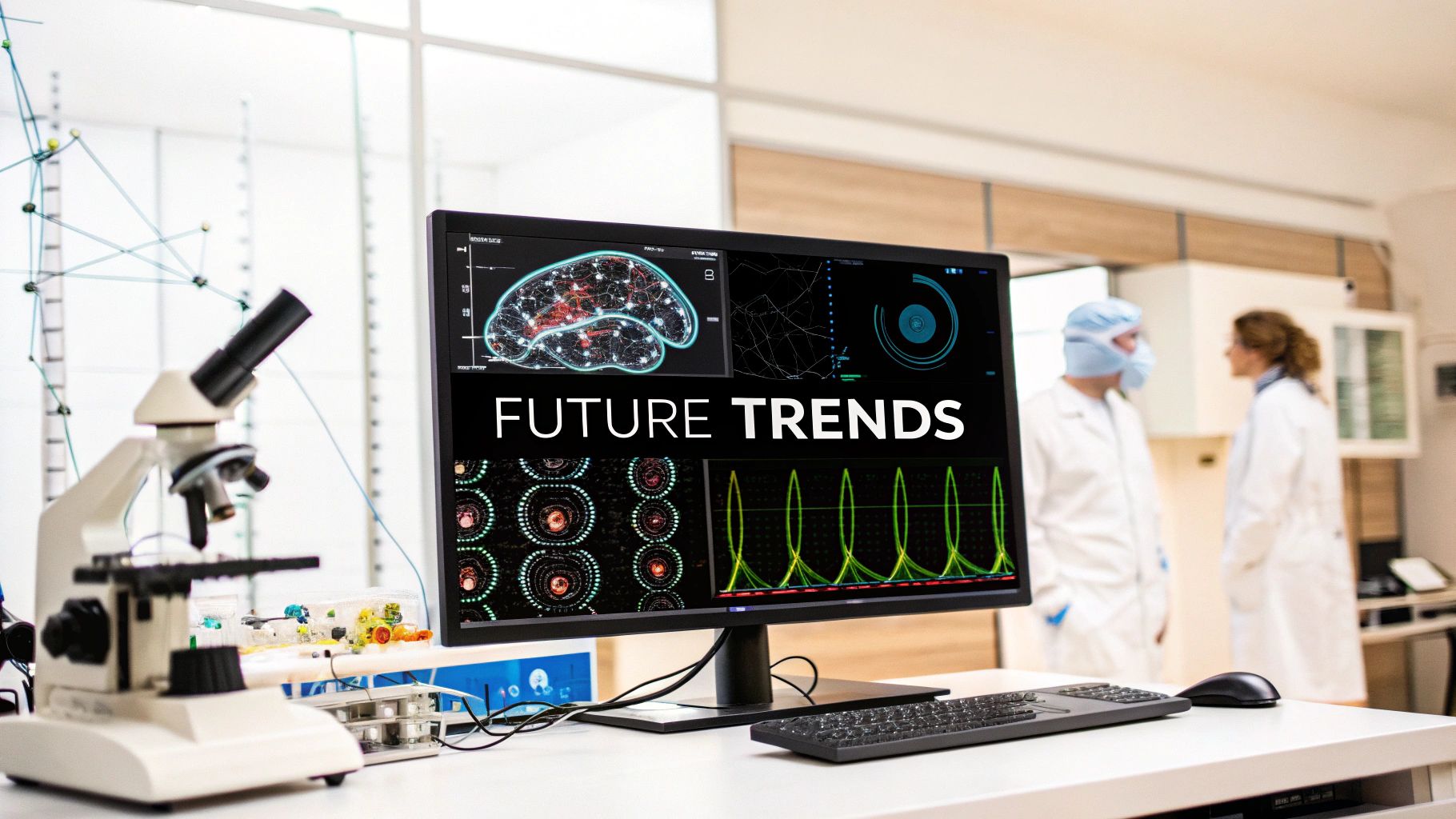
Successfully implementing a robust system for managing DICOM data is crucial for any healthcare organization. This involves understanding the technical aspects of DICOM as well as how it impacts clinical operations and patient care. Effective DICOM implementation requires a strategic approach, considering various factors, from data governance to quality control.
Building a Foundation for DICOM Data Excellence
The cornerstone of any successful DICOM implementation is a well-defined data governance framework. This framework should outline clear policies for data access, storage, retention, and security. These policies must align with industry best practices and regulatory requirements like HIPAA.
Establish clear roles and responsibilities for managing DICOM data. This ensures accountability and streamlines decision-making. A dedicated team responsible for data quality, security, and compliance is essential. This team needs the expertise to address technical issues and ensure data integrity. A solid data governance framework creates a foundation for effective DICOM management and helps ensure compliance and data integrity.
Quality Control: Ensuring Data Integrity
Maintaining high data quality is paramount for accurate diagnoses and effective patient care. This requires consistent quality control procedures throughout the entire DICOM data lifecycle. Implementing automated quality checks during image acquisition can help identify and correct errors early on.
Regular audits of DICOM data can help detect inconsistencies or inaccuracies that may arise over time. These audits should include checks on metadata accuracy, image quality, and data completeness. This proactive approach minimizes errors, enhances diagnostic accuracy, and promotes better patient outcomes. Addressing data quality issues promptly is vital for maintaining data integrity and ensuring its reliability for clinical decision-making.
Navigating the DICOM Landscape: Tips for Successful Implementation
Several practical steps contribute to a successful DICOM implementation:
- Vendor Collaboration: Working closely with system vendors is essential for seamless integration and interoperability. Open communication and collaborative problem-solving are key to addressing technical challenges effectively.
- Scalability: Design your DICOM infrastructure with future growth in mind. Ensure your systems can handle increasing data volumes and accommodate new technologies. This proactive approach avoids costly system overhauls later.
- Training and Education: Invest in training for staff members who interact with DICOM data. This empowers them to use the system effectively and maintain data quality. Ongoing education ensures staff stay updated on the latest DICOM standards and best practices.
Implementation Pitfalls to Avoid
While implementing DICOM, be mindful of potential challenges:
- Underestimating Data Storage Needs: DICOM files can be large. Inadequate storage planning can lead to performance issues and limit future expansion. Carefully assess current and projected data volumes.
- Neglecting Data Backup and Recovery: Data loss can be catastrophic. Implement robust backup and recovery procedures to safeguard against hardware failures, disasters, or cyberattacks. Regularly test these procedures.
- Overlooking Metadata Management: Metadata is crucial for organizing and interpreting DICOM data. Lack of attention to metadata can create difficulties in data retrieval and analysis. Implement standardized metadata tagging and quality control.
Measuring Success: Key Metrics That Matter
Track these key metrics to assess the effectiveness of your DICOM implementation:
- System Uptime: High system availability is critical for uninterrupted clinical operations. Track downtime and identify areas for improvement.
- Data Retrieval Speed: Quick access to DICOM data is essential for timely diagnoses. Monitor retrieval times and optimize system performance.
- Error Rates: Track data errors and implement corrective actions to improve data quality and reduce the risk of misdiagnosis.
By implementing these strategies and monitoring these metrics, healthcare organizations can effectively manage their DICOM data, leading to improved clinical outcomes and operational efficiency. This ensures that DICOM data serves its purpose: enhancing patient care and advancing medical knowledge.
PYCAD, specializing in AI integration for medical imaging, understands the complexities of managing and utilizing DICOM data. Their solutions can optimize medical devices, enhance diagnostic accuracy, and improve operational efficiency. From data handling and model training to deployment and ongoing support, PYCAD offers comprehensive services tailored to your specific needs. Learn more about PYCAD and their AI-powered solutions for medical imaging at https://pycad.co.

